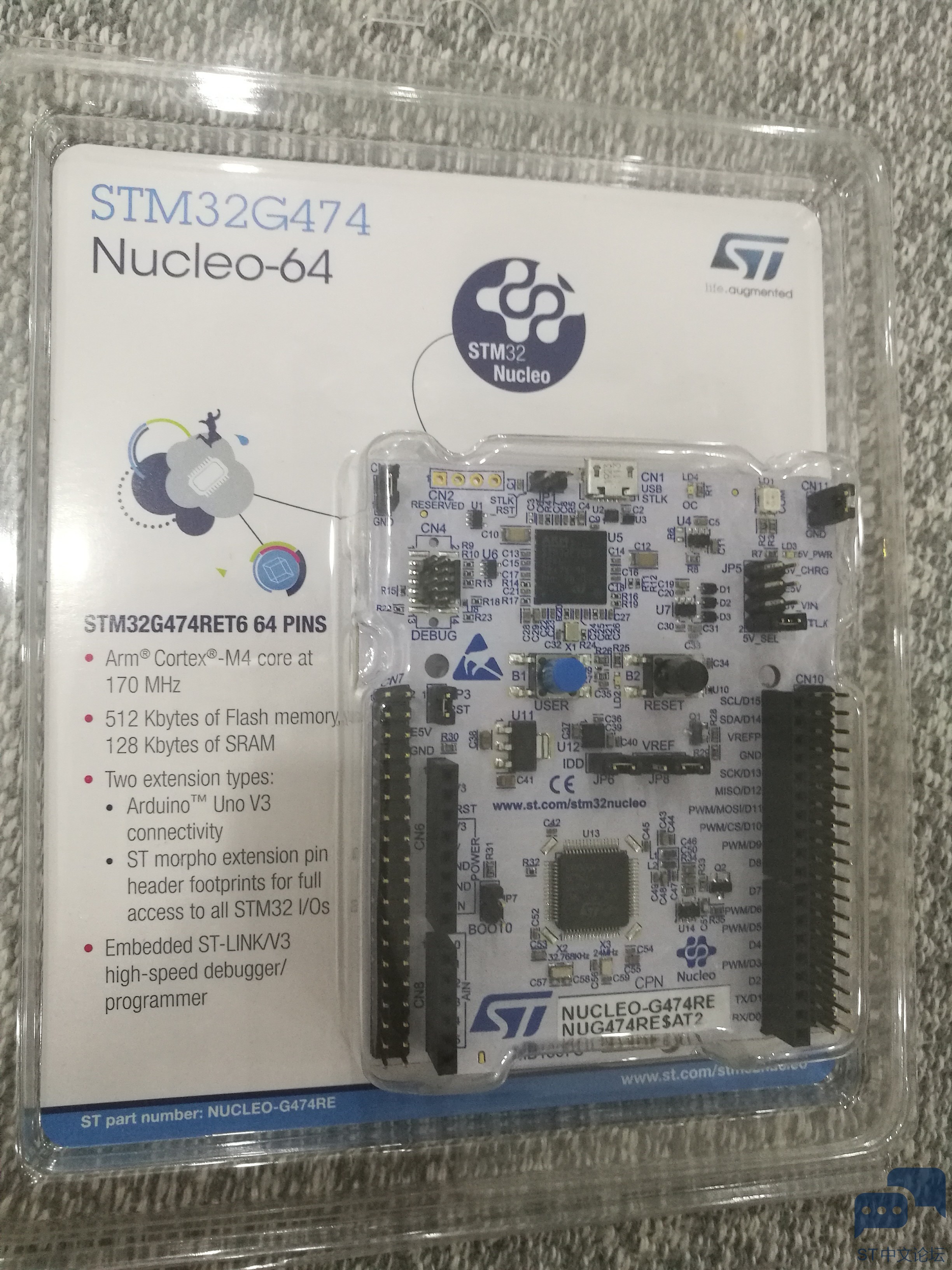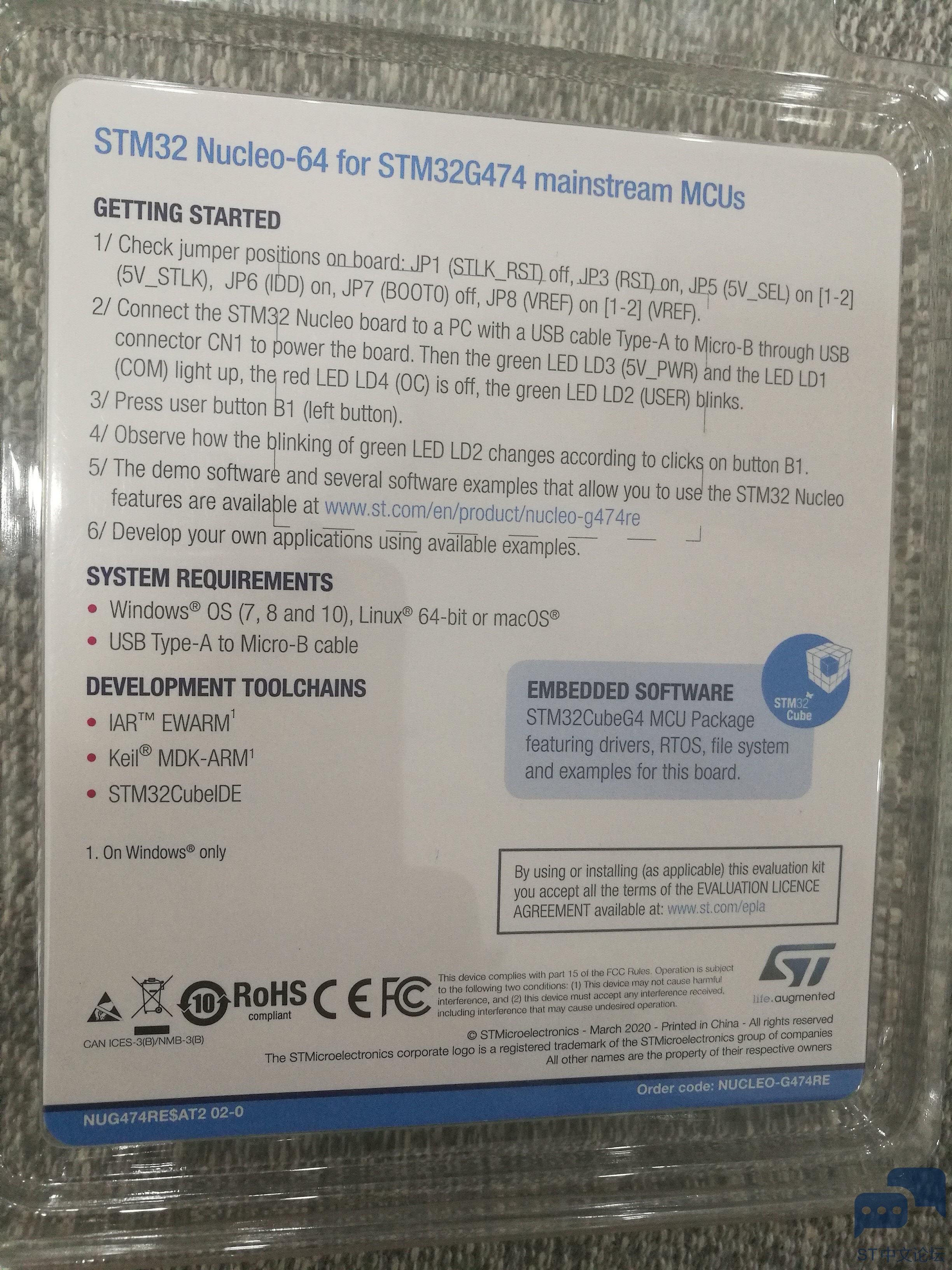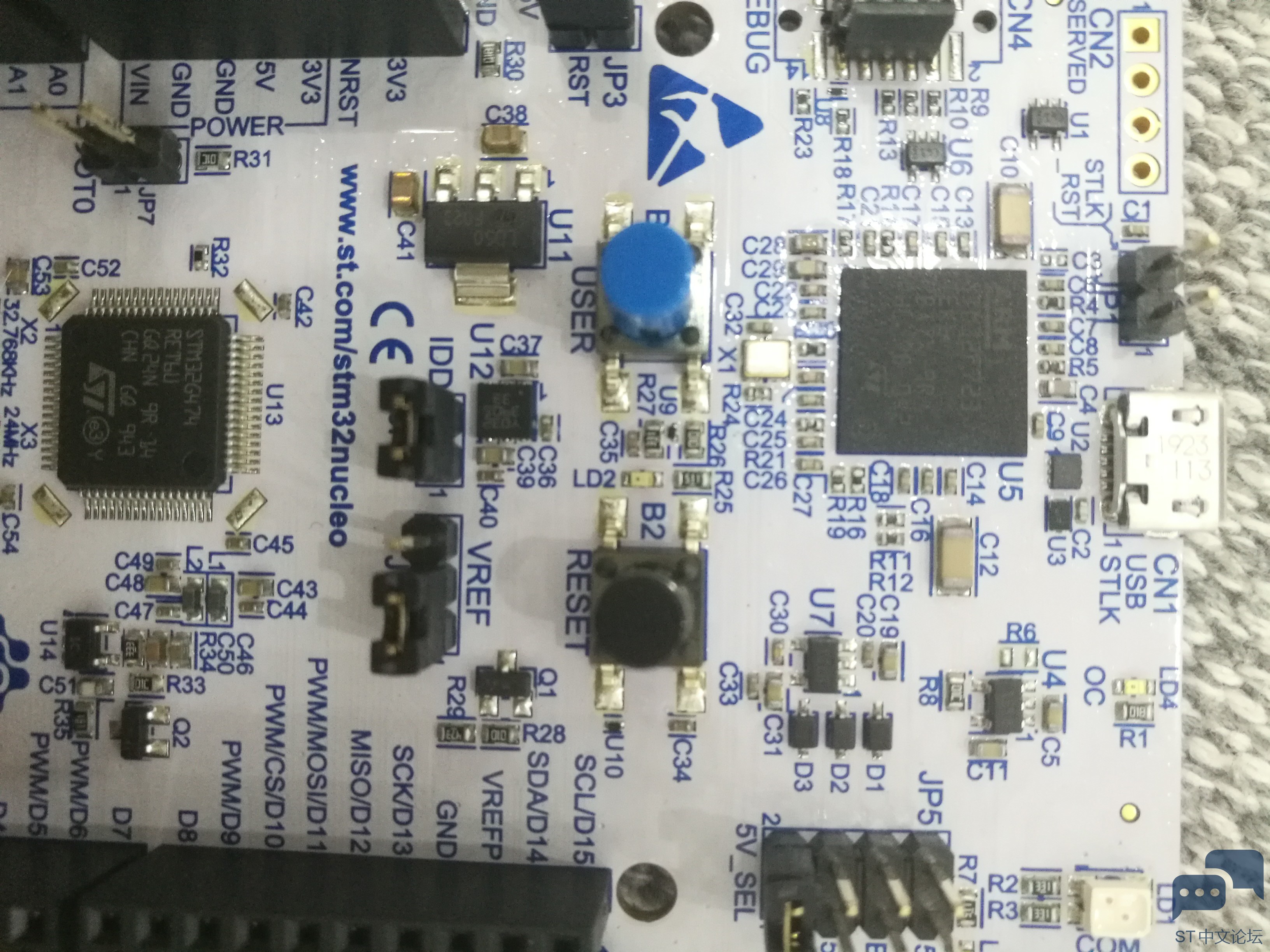
|
感谢管理“Seven”,因为工作原因不能实地参加STM32的深圳会议,在seven管理的热心组织下,通过线上直播让我了解了这一次的技术盛况,从开始的技术讲解到后期的竞赛直播,各个阶段都充分体现了专业性、素养性。不但使我学习了知识,同时也更好的了解了STM32的相关技术和使用场景,对我个人是一个很大的提升,在此对ST公司和seven管理再次表示感谢。 在黑客松的比赛中通过各个参赛队伍的作品,看到了不同的创意,产品技术是固定的,关键看人怎么使用。同样的平台,不同的思考方向,差异化的使用方法,打造出不同的产品方案。十分棒。在观看的过程中有幸获得抽奖奖品“STM32G474”,目前已经收到。谢谢。 希望以后的活动更加丰富,开发出更多的产品。 描述 The STM32G474xB/xC/xE devices are based on the high-performance Arm® Cortex®-M4 32-bit RISC core. They operate at a frequency of up to 170 MHz. The Cortex-M4 core features a single-precision floating-point unit (FPU), which supports all the Arm single-precision data-processing instructions and all the data types. It also implements a full set of DSP (digital signal processing) instructions and a memory protection unit (MPU) which enhances the application’s security. These devices embed high-speed memories (512 Kbytes of Flash memory, and 128 Kbytes of SRAM), a flexible external memory controller (FSMC) for static memories (for devices with packages of 100 pins and more), a Quad SPI Flash memory interface, and an extensive range of enhanced I/Os and peripherals connected to two APB buses, two AHB buses and a 32-bit multi-AHB bus matrix. The devices also embed several protection mechanisms for embedded Flash memory and SRAM: readout protection, write protection, securable memory area and proprietary code readout protection. The devices embed peripherals allowing mathematical/arithmetic function acceleration (CORDIC for trigonometric functions and FMAC unit for filter functions). They offer five fast 12-bit ADCs (5 Msps), seven comparators, six operational amplifiers, seven DAC channels (3 external and 4 internal), an internal voltage reference buffer, a low-power RTC, two general-purpose 32-bit timers, three 16-bit PWM timers dedicated to motor control, seven general-purpose 16-bit timers, and one 16-bit low-power timer, and high resolution timer with 184 ps resolution. They also feature standard and advanced communication interfaces such as: 所有功能 Core: Arm® 32-bit Cortex®-M4 CPU with FPU, Adaptive real-time accelerator (ART Accelerator) allowing 0-wait-state execution from Flash memory, frequency up to 170 MHz with 213 DMIPS, MPU, DSP instructions Operating conditions: VDD, VDDA voltage range: 1.71 V to 3.6 V Mathematical hardware accelerators CORDIC for trigonometric functions acceleration FMAC: filter mathematical accelerator Memories 512 Kbytes of Flash memory with ECC support, two banks read-while-write, proprietary code readout protection (PCROP), securable memory area, 1 Kbyte OTP 96 Kbytes of SRAM, with hardware parity check implemented on the first 32 Kbytes Routine booster: 32 Kbytes of SRAM on instruction and data bus, with hardware parity check (CCM SRAM) External memory interface for static memories FSMC supporting SRAM, PSRAM, NOR and NAND memories Quad-SPI memory interface Reset and supply management Power-on/power-down reset (POR/PDR/BOR) Programmable voltage detector (PVD) Low-power modes: sleep, stop, standby and shutdown VBAT supply for RTC and backup registers Clock management 4 to 48 MHz crystal oscillator 32 kHz oscillator with calibration Internal 16 MHz RC with PLL option (± 1%) Internal 32 kHz RC oscillator (± 5%) Up to 107 fast I/Os All mappable on external interrupt vectors Several I/Os with 5 V tolerant capability Interconnect matrix 16-channel DMA controller 5 x 12-bit ADCs 0.25 µs, up to 42 channels. Resolution up to 16-bit with hardware oversampling, 0 to 3.6 V conversion range 7 x 12-bit DAC channels 3 x buffered external channels 1 MSPS 4 x unbuffered internal channels 15 MSPS 7 x ultra-fast rail-to-rail analog comparators 6 x operational amplifiers that can be used in PGA mode, all terminals accessible Internal voltage reference buffer (VREFBUF) supporting three output voltages (2.048 V, 2.5 V, 2.95 V) 17 timers: HRTIM (Hi-Resolution and complex waveform builder): 6 x16-bit counters, 184 ps resolution, 12 PWM 2 x 32-bit timer and 2 x 16-bit timers with up to four IC/OC/PWM or pulse counter and quadrature (incremental) encoder input 3 x 16-bit 8-channel advanced motor control timers, with up to 8 x PWM channels, dead time generation and emergency stop 1 x 16-bit timer with 2 x IC/OCs, one OCN/PWM, dead time generation and emergency stop 2 x 16-bit timers with IC/OC/OCN/PWM, dead time generation and emergency stop 2 x watchdog timers (independent, window) 1 x SysTick timer: 24-bit downcounter 2 x 16-bit basic timers 1 x low-power timer Calendar RTC with alarm, periodic wakeup from stop/standby Communication interfaces 3 x FDCAN controller supporting flexible data rate 4 x I2C Fast mode plus (1 Mbit/s) with 20 mA current sink, SMBus/PMBus, wakeup from stop 5 x USART/UARTs (ISO 7816 interface, LIN, IrDA, modem control) 1 x LPUART 4 x SPIs, 4 to 16 programmable bit frames, 2 x with multiplexed half duplex I2S interface 1 x SAI (serial audio interface) USB 2.0 full-speed interface with LPM and BCD support IRTIM (infrared interface) USB Type-C™ /USB power delivery controller (UCPD) True random number generator (RNG) CRC calculation unit, 96-bit unique ID Development support: serial wire debug (SWD), JTAG, Embedded Trace Macrocell™ |





有奖报名 | STM32全球线上峰会,全球STM32旗舰盛会即将启幕
STM32@SNEC 2025 | STM32解锁能源创新,赋能绿色未来
25年ST研讨会-参会总结
ST云实验室先锋计划:STDES-VIPGAN65F - 65W QR USB PD 适配器参考设计
基于LORA的环境感知系统
兔哥的边缘AI【001】——DIY-STM32N6全IO扩展板
兔哥的BLE【002】-WB09最小系统板PCB设计
兔哥的L4【001】——32脚的小板
【ST云实验室先锋计划】兔哥的IO-LINK 云上体验
拷打cubemx【003】——找不到的芯片包
 微信公众号
微信公众号
 手机版
手机版
